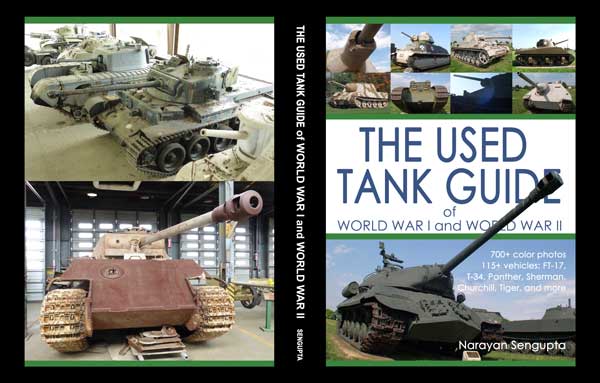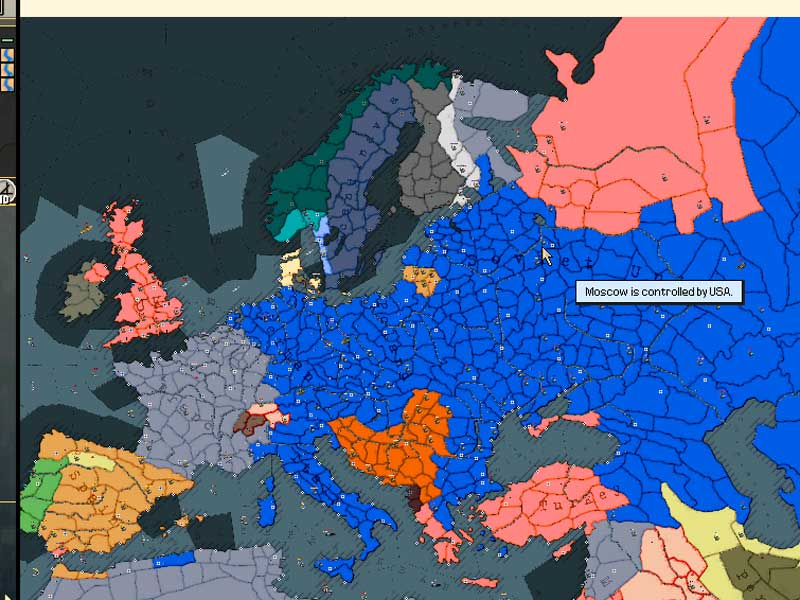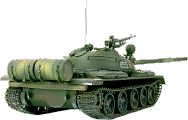by Philip Nelson
In PG3, many leader specials are similar to their counterparts in PG2. I thought it would fun to compare and contrast them.
Overwatch in PG2 is one of the best abilities you can get; it allows a tank to ambush the first unit that comes within range. In PG3, Overwatch is a bit different. It allows a unit to act like an artillery piece on defense: it will support all combat within range. It's difficult to say which is more effective; both tend to heavily bolster a defensive line.
Recon Movement in PG2 is an excellent special ability, allowing units to move in phases. Of course, all units in PG3 have the equivalent of phased movement. Instead, Recon Movement in PG3 allows a unit to move once without any penalties. This is an fine bonus, as it allows for much more mobility in a turn and an extra action.
First Strike can be a tremendous asset in PG2, allowing a unit to fire first if initiative is won. In PG3, it is the same except that it guarantees first strike capability unless the defending unit has the same power.
Devastating Fire is awesome in PG2, allowing units to fire twice in a turn. But units in PG3 can already fire multiple times per turn. Instead, Devastating Fire in PG3 eliminates the penalty for doing so. Normally, the effectiveness of multiple attacks by one unit in a turn decreases dramatically with each additional attack; but with this bonus, all attacks are at full strength. It is possible that it also applies to defensive attacks, as their effectiveness normally drops after multiple battles. Either way, this is an excellent ability to have.
Influence can be useful in PG2, allowing a unit to be upgraded, repaired, or overstrengthed at half-cost. However, upgrades and repairs are free in PG3, while overstrengthing is not possible. Instead, Influence in PG3 simply overstrengths a unit by two points. It may not sound like much, but it can be one of the best abilities to win. Since the highest-quality equipment is often at eight-strength, this bonus can increase such equipment's effectiveness by twenty percent, a significant difference.
Liberator is awesome in PG2, allowing a unit to garner twice the prestige for capturing objectives. In PG3, it allows a unit to win twice the victory points for capturing objectives. Its effects are not as easily discernable as in PG2; but, since victory points are part of what determines how many promotions are awarded at the end of a scenario, it can be very handy.
Fire Discipline is the same in PG3 as it is in PG2; it effectively gives a unit twice as much ammunition as normal.
Bridging is a moderate bonus in PG2, allowing units to treat rivers as rough terrain. River Assaulter is the PG3 equivalent; and it allows a unit to attack with no penalty in rivers, and also allows units to move through them more easily.
Infiltration Tactics can be one of the best bonuses to win in PG2, as it allows units to ignore entrenchment. (Not to mention its unofficial bonus). Though there is a similarly-named leader special in PG3, Infiltrator, it is actually identical to PG2's Superior Maneuver. Both allow a unit to ignore enemy zones-of-control.
Class Specials: PG2's vs. PG3's, Part Two
In this article we will compare and contrast the class specials of these games. A few are practically identical, though not necessarily to their corresponding special. But nearly all of them are useful, and some can be game-winners.
In PG2, the infantry special is Tenacious Defense. It increases an infantry unit's defensive abilities. In PG3, the class special is Tactician. It allows every one-range battle in which an infantry unit engages to be a close combat. In PG2 terms, a close combat is an assault. Imagine how devastating it would be in PG2 if infantry could assault armor anywhere without sustaining much damage, on offense or defense; and you will have an idea of just how important this special is in PG3. With it, infantry can reduce the mightiest armor to smoking hulks at little cost. If a Tactician unit is attacked by armor, it is almost always at two-range, minimizing damage to the infantry unit.
In PG2, the special for the tank class is Aggressive Maneuver. It allows a tank unit to move one extra hex. In PG3D, the class special, Maneuver, is essentially the same. Because of the phased movement system, it allows tanks to move much further than they could otherwise. In PG3-SE, however, the class special is Blitz. It allows a tank to force the surrender of any unit that retreats after a one-range battle with the tank. Interestingly, this is the only difference between PG3D and PG3-SE in regards to any special.
In PG2, the recon special is Elite Recon Veteran, which increases a recon's spotting range by two hexes. In PG3, the class special is Force Recon, and it increases a recon's spotting range by one hex.
In PG2, the special for the anti-tank class is Tank Killer, which eliminates the penalty anti-tanks suffer for moving and then shooting. In PG3, this class's special is Positioning. It allows an anti-tank unit to completely entrench in one turn. This is a very good bonus, and can be used to make the defensive perimeter of an advance much stiffer. Not only that, it can even help in attacking because a fully-entrenched AT unit has First Strike capability.
In PG2, the artillery special is Marksman, which increases an artillery unit's range by one. In PG3, the class special is Expert Support, and it increases possible defensive barrages by one. Thus it is usually best to pair an Expert Support leader with an artillery piece that carries a good amount of ammunition and has at least a range of three. Assault artillery, like the sIG IB or Katyusha, don't have enough ammunition or range to efficiently take advantage of this ability.
In PG2, the air defense special is Mechanized Veteran. It allows a self-propelled air defense unit to move and shoot. In PG3, all air defense units can already do that because of the phased movement system. However, they are penalized in PG3-SE for moving and shooting, much like anti-tanks in PG2. The air defense special in PG3 is Sharpshooter, and it increases the range of an AD unit by one. A Sharpshooter 88mm FlaK coupled with the Careful Positioning and Early Warning veteran orders has a range of six hexes on defense!
In PG2, the fighter class special is Skilled Interceptor. It allows a fighter to intercept enemy air units more than once in a turn. In PG3, the class special is Hawkeyes. It increases the spotting ability of fighters and allows them to ignore reserve fire in combat.
In PG2, the bomber special is Skilled Assault, which allows a bomber to ignore 'out-of-the-sun' results. In PG3, the special is All-Weather. That allows a bomber to treat cloudy weather as if it were clear and attack at half-strength in stormy weather. An excellent use of this special is the bombing of enemy AD units in snowy or rainy conditions, as they cannot shoot back.
Leader Specials: PG2's vs. PG3's, Part Three
In PG2, Aggressive Attack and Determined Defense are two specials with similar effects- the first increases a unit's overall attacking ability, the second increases a unit's overall defensive ability. In PG3, these specials operate a little differently. The first allows a unit to do more damage and sustain less on offense, while the second allows a unit to do more damage and sustain less on defense.
In PG2, a unit with Battlefield Intelligence cannot be ambushed. In PG3, the equivalent special is Sixth Sense. Not only does it allow a unit to ignore ambushes, it also allows a unit to ignore reserve fire.
In PG2, Resilience is something of a mystery, but it seems to involve a lessening of the penalty units sustain when attacked multiple times. In PG3, this special decreases the likelihood that a movement or firing attribute will be destroyed in an attack, making it a very useful ability.
In PG2, Alpine Training gives infantry the ability to ignore the movement penalties of rough terrain, forests, and mountains. In PG3, Mountaineer is the corresponding special. Not only does it decrease the movement penalties of various terrain types, it also decreases the penalty for attacking uphill. This is a very useful special to win on towed units in trucks, as they bog down badly off-road.
Aggressive Maneuver essentially does the same thing in both PG2 and PG3; it allows a unit to increase its movement by one hex. However, the effect is more noticable in PG3 because of the phased movement system.
Skilled Recon is also nearly identical in both games; it increases the spotting range of units.
In PG2, Streetfighter allows units to ignore entrenchment in cities. In PG3, however, it increases a unit's performance in close combat.
In both PG2 and PG3 Overwhelming Attack converts suppression to kills. Due to its suppression-oriented engine, this is the probably the best special in PG3. Artillery and bomber leaders with Overwhelming Attack are awesome; and the second combination is quite possibly the most destructive possible, allowing a good bomber to delete undefended enemy tanks at will.
In PG2, no unit can ignore the entrenchment of a Ferocious Defender. In PG3, this special allows a unit, usually infantry, to fully entrench in one turn. Thus it is useful on both offense and defense.
Shock Tactics is identical in PG2 and PG3, allowing any suppression caused by a unit to remain the entire turn. An air-defense unit with Shock Tactics is very handy in PG3.
A Final Look at Random Specials
Ground Taker gives a unit the ability to force retreats more often. A tank with this ability is a powerhouse, because every retreat it forces becomes a surrender instead due to Blitz.
Blitzer allows equipment classes other than tanks to overrun units. An anti-tank with this ability can be fearsome indeed.
A leader with Assaulter attacks as if it were supported by infantry. This is a nice medal to have with just about any class, but it is especially good with tanks.
Tank Hunter increases the ability of air units to damage tanks. While Tank Hunter is a decent special, Overwhelming Attack is still more useful for attacking tanks. Plus, it applies to all ground attacks.
A unit with Camouflage Expert becomes harder to spot. It is not a very useful ability; but it can be handy in certain situations, such as on artillery hiding from enemy airforces, or on units preparing to assault a position defended by heavy armor.
Quartermaster nullifies the multiple-refit penalty in PG3. It can be good to have on units that are in frequent danger of being damaged- like bombers or recons. If it is won on a tough unit like a tank, it can be a good strategy to use that unit to do most of the dirty work, so to speak.
Sharpshooter is an excellent ability, allowing one-range units to fire two hexes, and two-range units to fire two hexes at full strength. Recons, tanks, anti-tanks, and infantry can all benefit from this special; but on two-range armor it becomes a super-weapon.
Smart Gambler allows a unit to never experience worse results than the battle odds predict, not counting unseen support weapons. This is especially nice to have on fighters or bombers, as it can guarantee that they will finish off isolated units that they might otherwise miss.
Skirmisher makes a unit harder to damage, on offense or defense; but it does not have a very noticeable effect either way.
Fast Assaulter applies only to infantry, and it gives them the ability to ignore support fire when attacking. This is a definitive super-special when paired with Engineers, as it makes capturing well-defended objectives or breaking through defensive lines much simpler. Only the unit being attacked needs to be suppressed, while ordinarily one would be concentrating on things like shelling enemy air defenses, bombing artillery, and so on.
Supply Training gives a unit four extra ammo. This most useful on artillery or bombers;
and is fairly worthless on nearly anything else, though ISU-152's and IS-3's can certainly benefit from it.
A Survivor leader will never die when his unit is destroyed. I daresay movies have been made about this fellow. Seriously, it is probably best to win this ability on a recon, as you can use it as bait without fear of losing anything valuable. Not to mention that the AI specifically targets recons anyway....
Night Drop applies only to infantry, and it allows paratroopers to land without being intercepted by fighters or air defense units. Pairing one of these with Rangers or Commandos makes for an excellent combination.
Philip Nelson

Wargame Patches, Scenarios...
Books & more...

Tanks! - 90 pages of tank photos

USAF, USN and Tank Screen Savers
Hearts of Iron II
People's General
Panzer General
Allied General/Cold War General
Pacific General
Strategic Command 2
Commander - Europe at War

American Eagles - The Illustrated
History of American Aviation
in World War I $9.95
Lafayette Escadrille: America's Most Famous Squadron $9.95

Battleship Bismarck
Disaster at Dieppe!
Robert Thibault, French Soldier
Liberation of France in 1944

Paris fortifications
Verdun (7 pages)
 French Military Victories...
French Military Victories...Design Credit:
Website: Atlanta SEO

 Home
Home Hearts of Iron
Hearts of Iron


